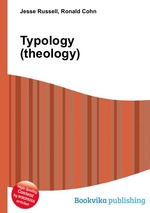Typology (theology)
Jesse Russell Ronald Cohn
бумажная книга
High Quality Content by WIKIPEDIA articles! Typology in Christian theology and Biblical exegesis is a doctrine or theory concerning the predictive relationship of the Old Testament to the New Testament. Events, persons or statements in the Old Testament are seen as types pre-figuring or superseded by antitypes, events or aspects of Christ or his revelation described in the New Testament. For example Jonah may be seen as the type of Christ in that he appeared to have emerged from the whale`s belly and from death. Typology is thus comparable with Supersessionism. In the fullest version of the theory of typology, the whole purpose of the Old Testament is viewed as merely the provision of types for Christ, the antitype, or fulfillment. The theory began in the Early Church, was at its most influential in the High Middle Ages, and continued to be popular, especially in Calvinism, after the Protestant Reformation, but in subsequent periods has been given less emphasis. The most notable exception to this is in the Eastern Orthodox Church, where typology is still a common and frequent exegetical tool, mainly due to that church`s great emphasis on continuity in doctrinal presentation through all historical periods. Typology was frequently used in early Christian art, where type and antitype would be depicted in contrasting positions. The usage of the terminology has expanded into the secular sphere, as in for example "Geoffrey de Montbray (d.1093), Bishop of Coutances, a right-hand man of William the Conqueror, was a type of the great feudal prelate, warrior and administrator".


